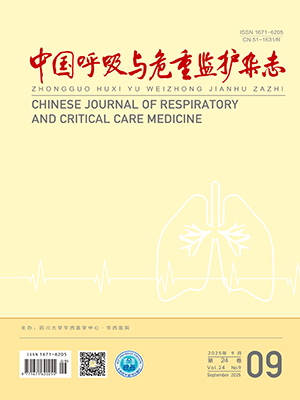| 1. |
陈小波, 张萍, 李时悦, 等. 呼吸系统疾病冷冻活检的临床应用研究进展. 国际呼吸杂志, 2018, 38(10): 796-800.
|
| 2. |
Hetzel J, Maldonado F, Ravaglia C, et al. Transbronchial cryobiopsies for the diagnosis of diffuse parenchymal lung diseases: expert statement from the Cryobiopsy Working Group on safety and utility and a call for standardization of the procedure. Respiration, 2018, 95(3): 188-200.
|
| 3. |
陈小波, 罗群, 陈愉, 等. 冷冻肺活检对间质性肺疾病诊断有效性及安全性的前瞻性研究. 中华结核和呼吸杂志, 2018, 41(6): 467-471.
|
| 4. |
Ernst A, Eberhardt R, Wahidi M, et al. Effect of routine clopidogrel use on bleeding complications after transbronchial biopsy in humans. Chest, 2006, 129(3): 734-737.
|
| 5. |
Babiak A, Hetzel J, Krishna G, et al. Transbronchial cryobiopsy: a new tool for lung biopsies. Respiration, 2009, 78(2): 203-208.
|
| 6. |
Yarmus L, Akulian J, Gilbert C, et al. Cryoprobe transbronchial lung biopsy in patients after lung transplantation: a pilot safety study. Chest, 2013, 143(3): 621-626.
|
| 7. |
Schuhmann M, Bostanci K, Bugalho A, et al. Endobronchial ultrasound-guided cryobiopsies in peripheral pulmonary lesions: a feasibility study. Eur Respir J, 2014, 43(1): 233-239.
|




